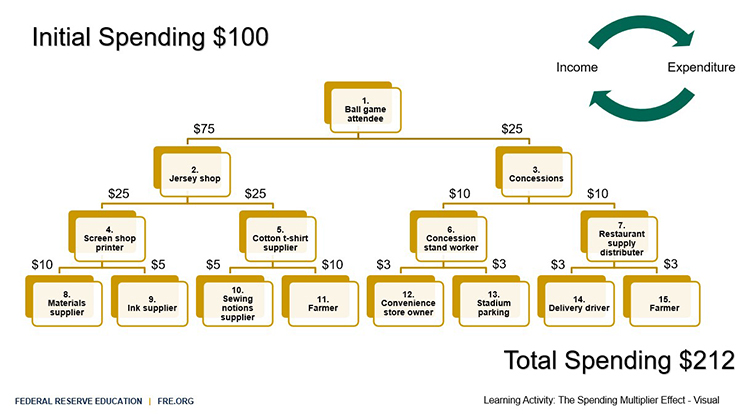{{resourceTitle}}
{{resourceBlurb}}
{{searchResultSnippet}}
 Back to All
Back to All

To celebrate National Economic Education Month, Federal Reserve Education recently posted three new lessons and activities that cover a wide range of topics and learning levels.
For middle school classrooms, introduce the relationship between prices, complementary and substitute goods with a 45-minute activity that connects sugar and carrots. This lesson also connects to historical themes by using the Boston Tea Party to show the impact the destruction of tea had on other goods and services in Colonial America.
High school students can step up to the plate and take a crack at using a baseball game to calculate the multiplying economic effect successive transactions can have for both producers and consumers. In approximately 15 minutes, your class can easily identify what effects economic growth has on the labor market and their wallets.
Teachers can also use a new lecture guide designed to assist AP Microeconomics courses easily cover one of the most abstract concepts students struggle to understand—deadweight loss. With colorful graphs, easy calculations, and relatable examples using cookies, cola, and blue jeans in a step-by-step script, help your classes practice different instances where market transactions are missed due to government interventions, external forces or international trade.
All FRE resources contain detailed procedures for instructors, printable handouts for active learning demonstrations, and PowerPoint slides to present information to your class.
Check out these new resources by clicking the links below!
{{resourceTitle}}
{{resourceBlurb}}